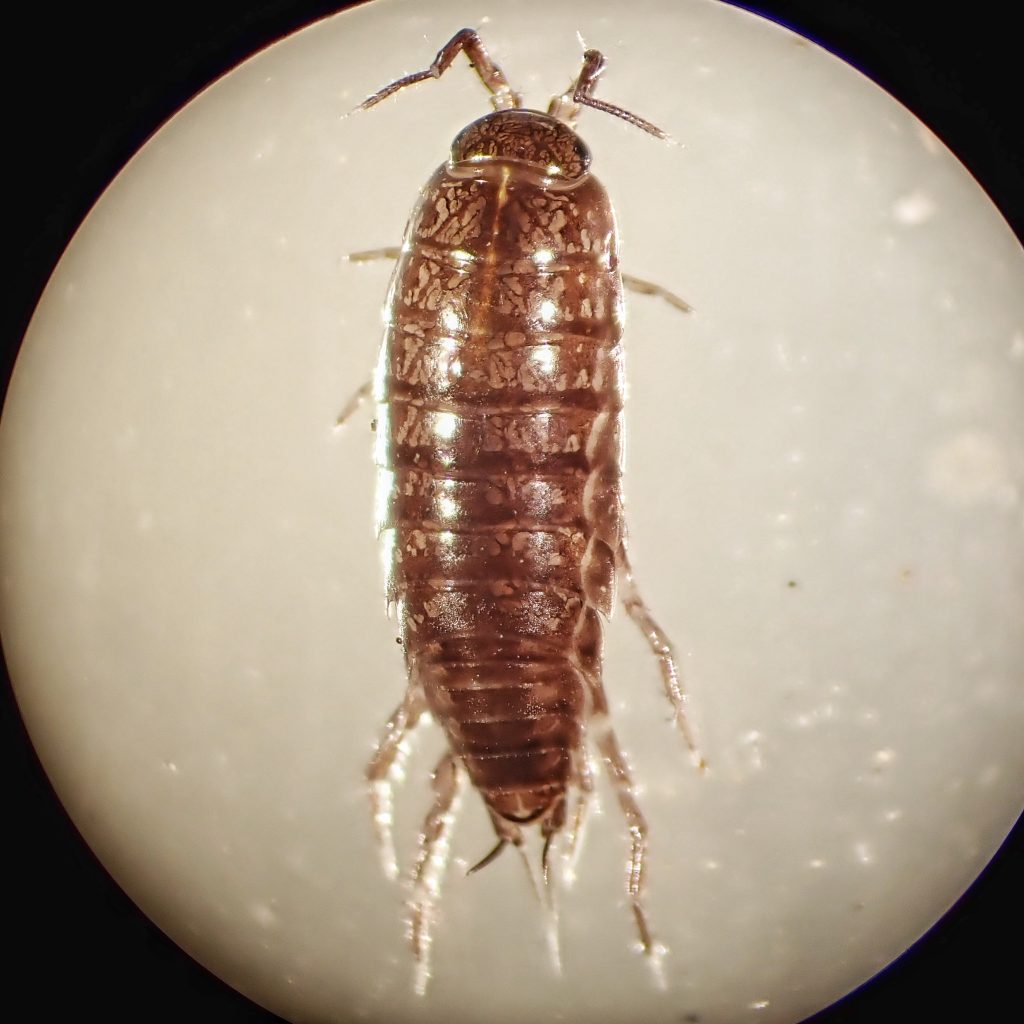
This member of the family Ligiidae was a particularly satisfying woodlouse to document, although they are far from rare, because it is one of the very few native and endemic Oniscidea in our region, all of which (with the exception of Oregoniscus nearcticus, in the family Trichoniscidae, for which there appears to only be a single record) are in the family Ligiidae. There are some members of the genera Trichoniscus and Porcellio that may prove to be native, although it is doubtful, but if so they would be Holarctic in range, and not endemic to the PNW.
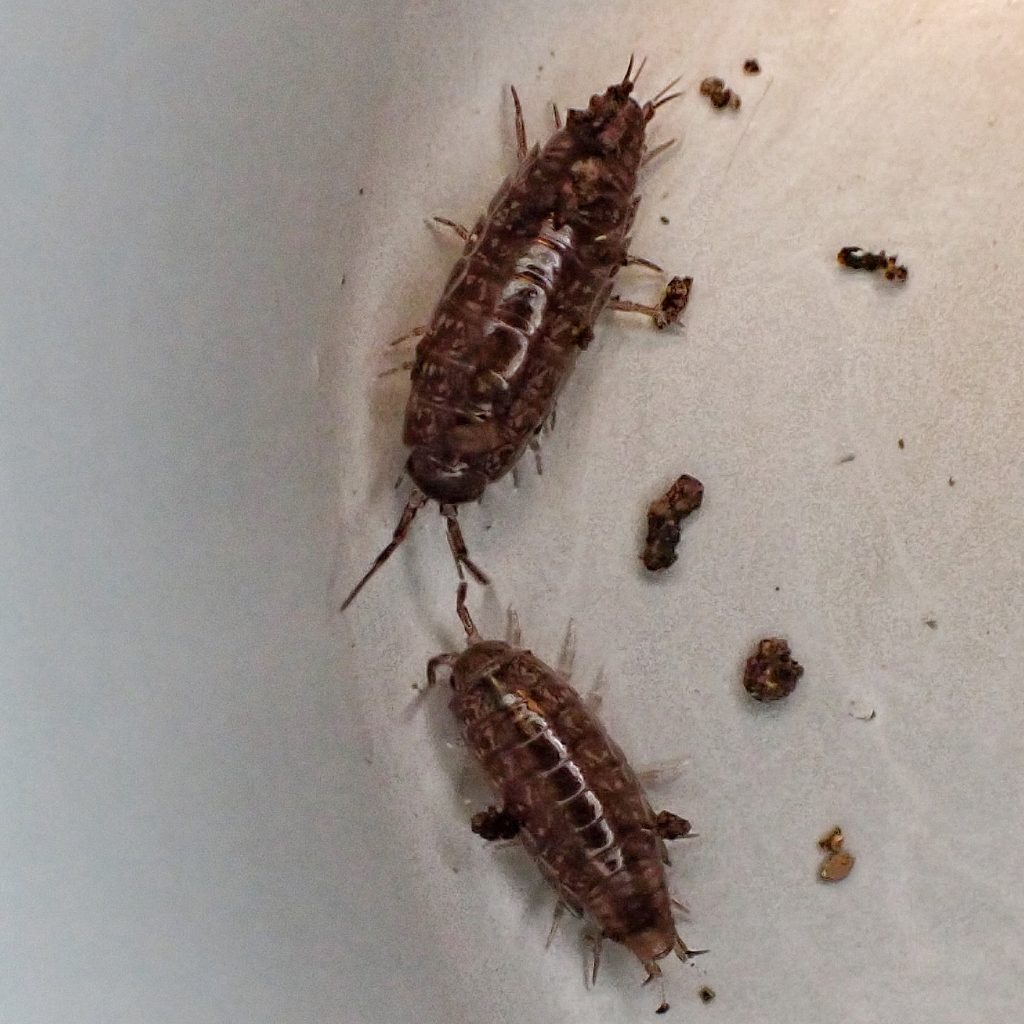
Being native and not synanthropic, Ligidium gracile is an important element in the decomposition processes of our forests, and is unlikely to be a pest, since they evolved long before humans began eliminating their natural food sources of decaying leaves and other detritus and leaving exposed dirt, in which they plant yummy cultivated vegetables. It is often the case with so-called ‘pest species’ of native arthropods that we have altered their natural environment and eliminated their preferred sustenance, which leads to them consuming what we have planted. In the case of introduced pests, they are usually synanthropic and have already adapted to agricultural products before they are introduced into the area where they are causing problems, an area that is usually lacking the predators they may have had in their native lands.
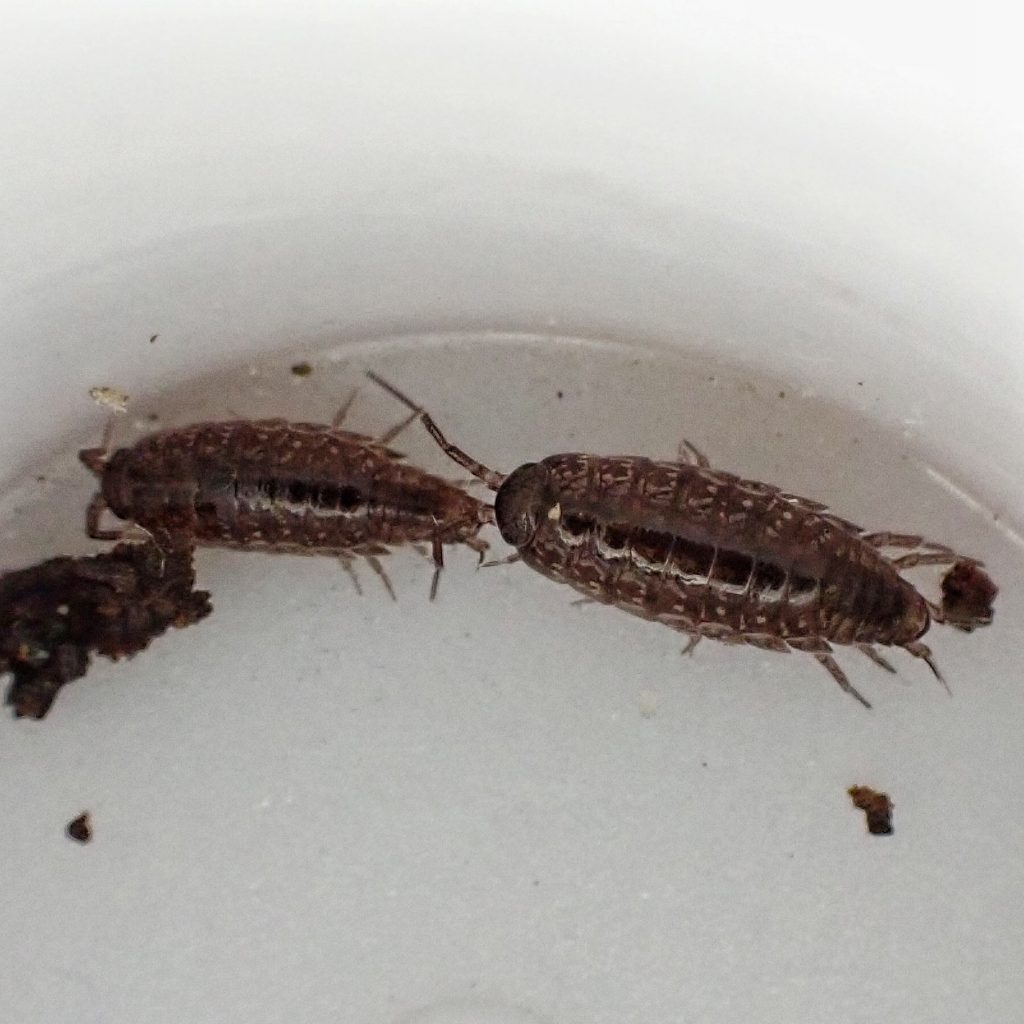
There is a somewhat surprising lack of information about the natural history of Ligidium gracile. Possibly this is because they don’t cause problems, so there is no funding for their study. And possibly it is because they are simply unobtrusive, and live in soil and leaf litter, environments that don’t seem to be well studied, at least judging by the dearth of natural history information I have been finding on other soil and litter invertebrates like millipedes, centipedes, pseudoscorpions, other isopods, etc. For a broad overview of woodlice in general, see my profile of Oniscus asellus.
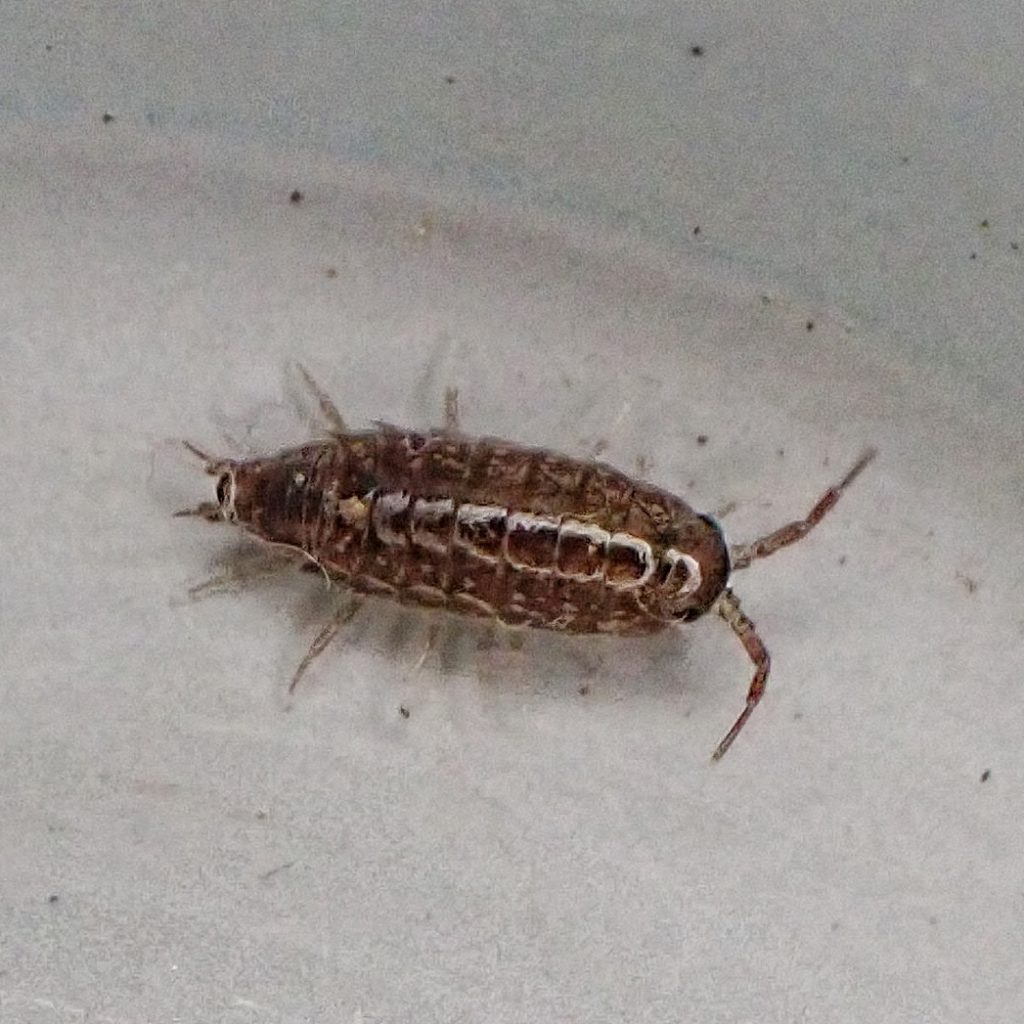
I apologize for the lack of in situ photographs. These little sowbugs are fast, and seemingly much quicker than the other woodlice I’ve found. And once exposed they take off, and don’t stop until they are back under cover. All of my shots in their natural surroundings ended up as blurs, or with multiple ghost images as the camera attempted the stack pics of the fleeing bug. As a group Ligiidae appear to be called rock slaters, but I can’t find any common names for this species.
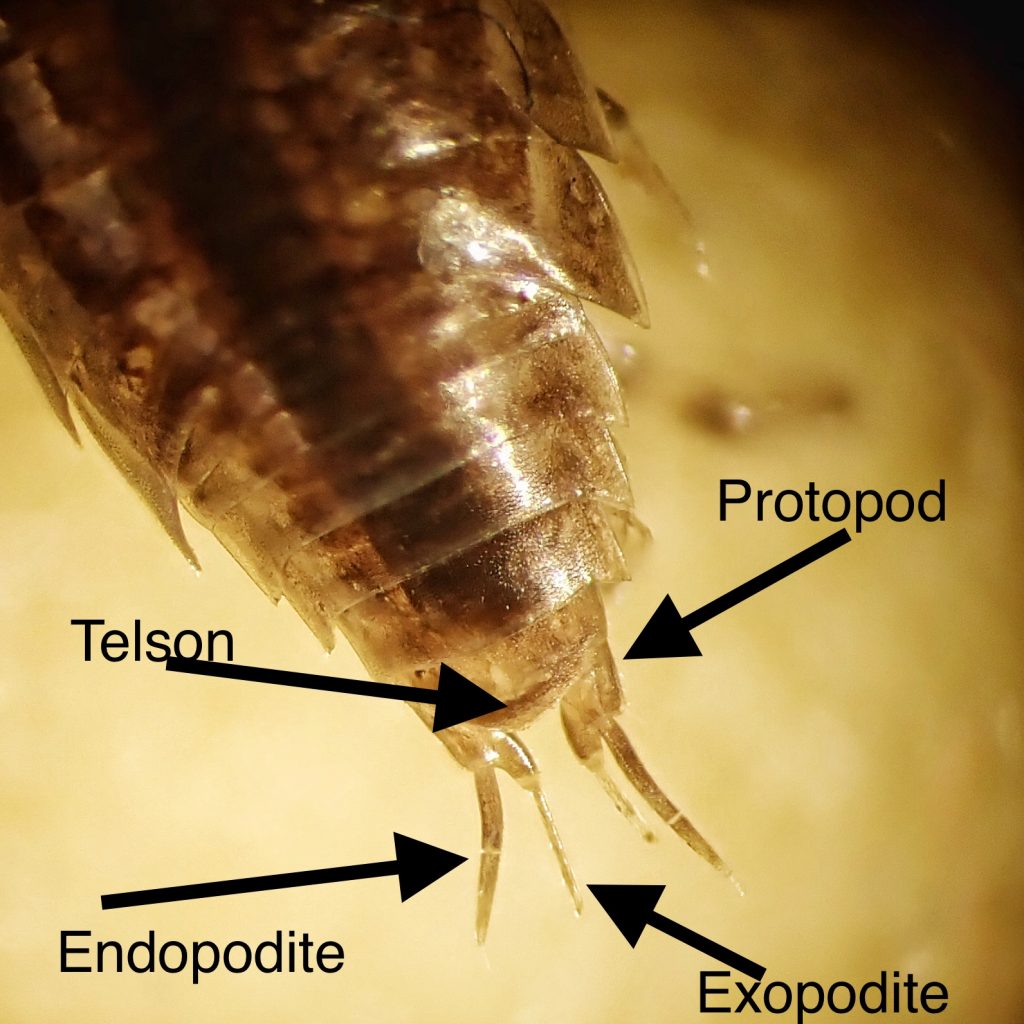
Description-Small (7-9mm long) dark greyish brown, smooth and shiny, with subtle, lighter colored mottling; relatively narrow, usually at least 3 times as long as wide; dorsal plates of the pleon (abdomen) narrow abruptly, and are spaced more closely together than the dorsal plates of the pereon (thorax); telson broadly rounded, slightly notched near the uropods; uropods with two long spikes (exopodite and endopodite), usually about twice as long as the protopod (basal segment);flagellum (end of antennae) with at least ten segments (15 in this case); does not roll into a ball; body is moderately convex.
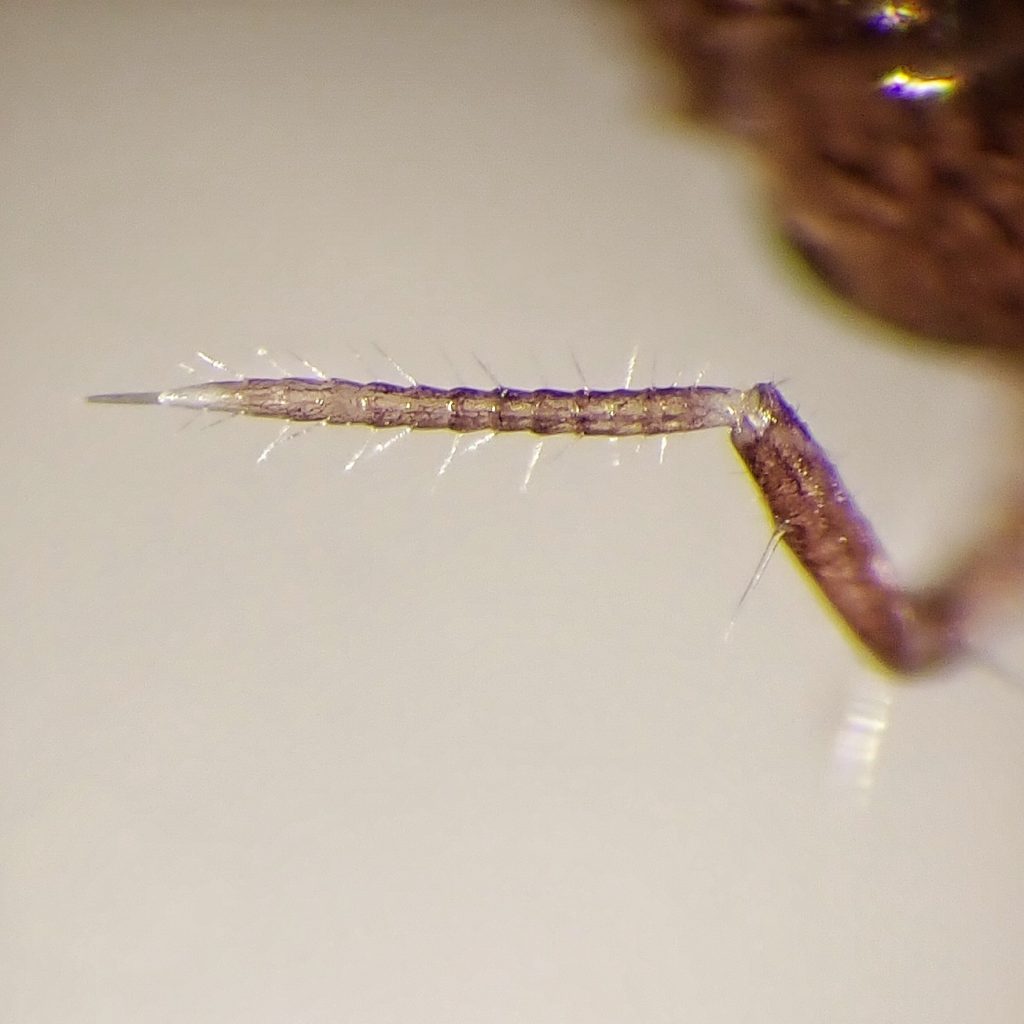
Similar species–Ligidium latum and L. lapetum are only found in California; all other species have the telson extended in the middle and have flagellum with 5 or less segments; Porcellio sp. and Oniscus asellus are also more broadly oval, and flatter; Armadillidium vulgare body is also more convex.
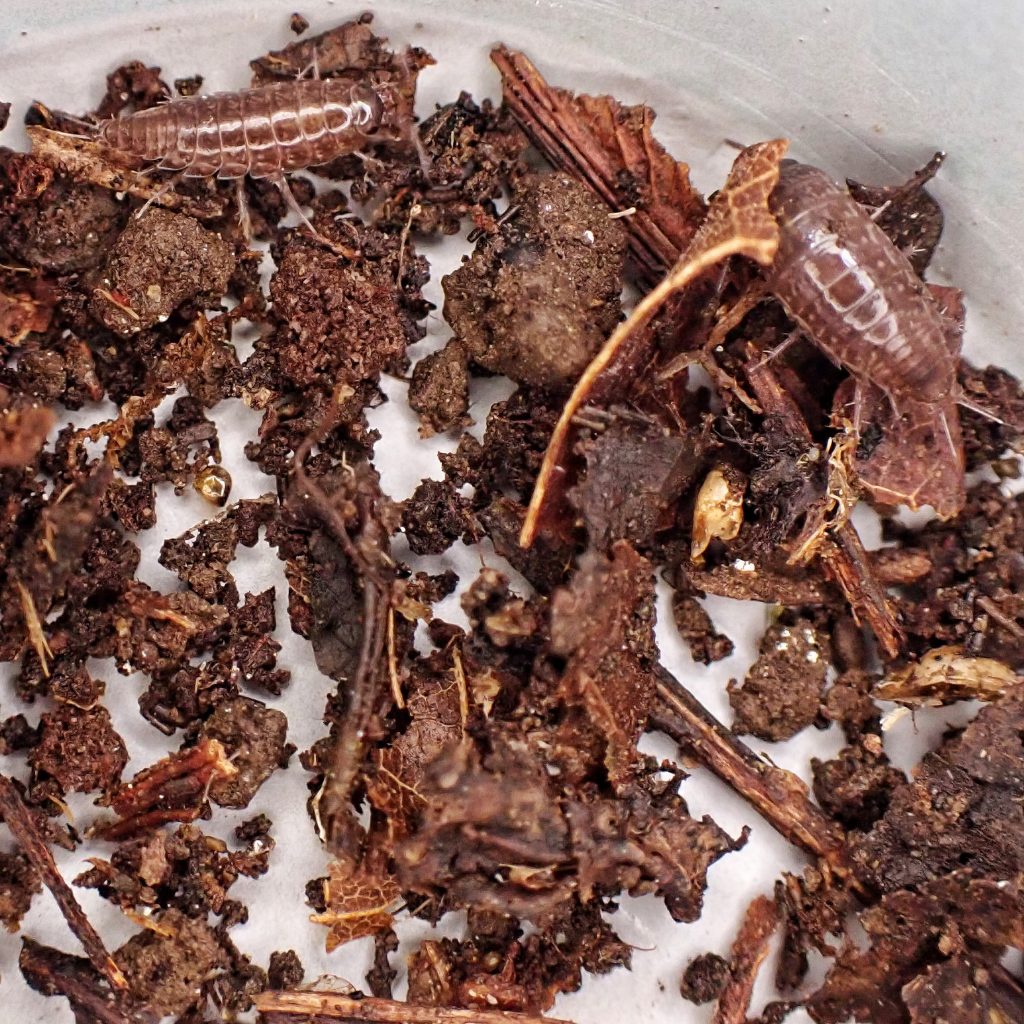
Habitat-Under logs, in leaf litter and in caves, up to 4500’ elevation; uncommon in urban areas and disturbed ground/wastelands.
Range-PNW endemic; west of the Cascades in BC, Washington, and Oregon, and in sw Oregon and nw California.
Eats-Detritus, decaying plant matter, spores, and possibly fungi and Myxogastria (slime ‘molds’).
Eaten by-Probably a wide variety of insectivores of all classes, including the spiders Dysdera crocata and Steatoda grossa.
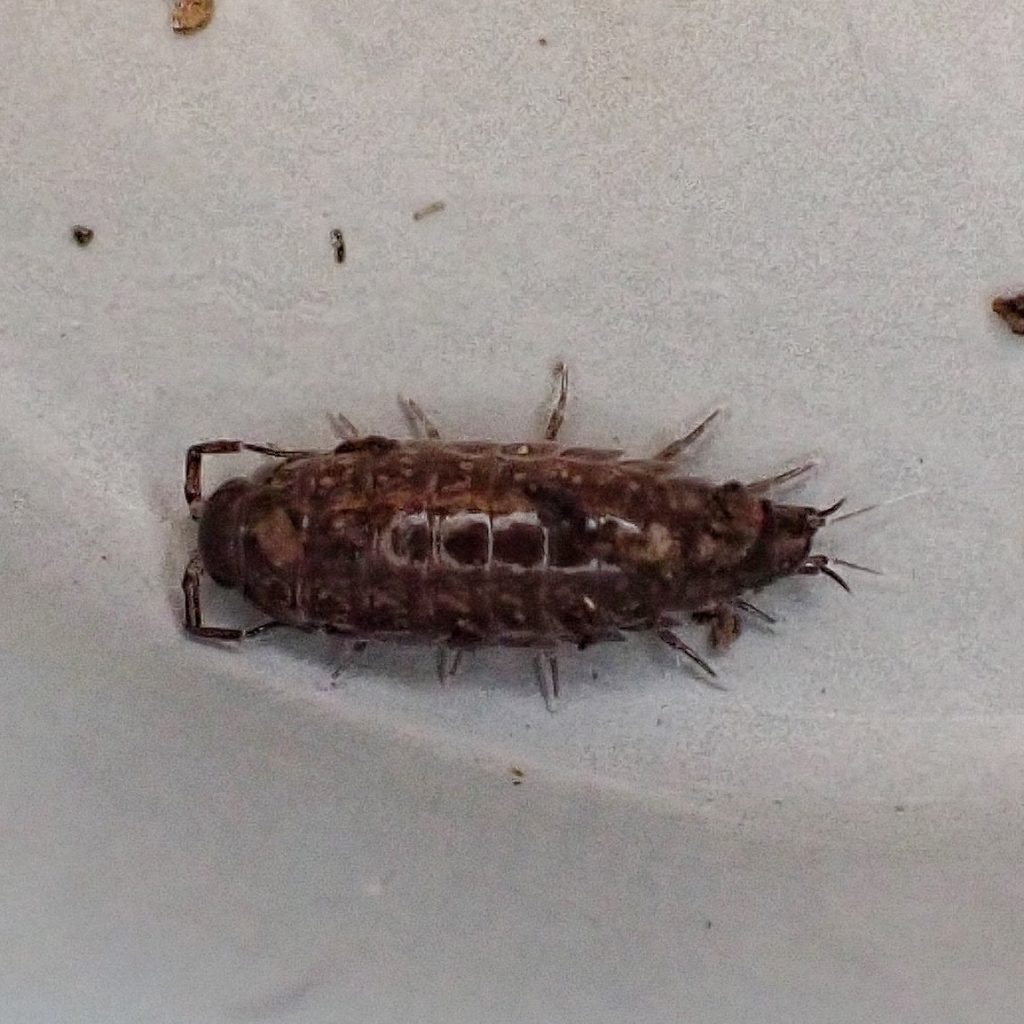
Adults active-Probably year around, but deep under cover during the coldest and wettest months.
Life cycle-Has a marsupium in which eggs are hatched and hatchlings carried until their first moult.
Etymology of names–Ligidium is from Greek mythology. Ligea was one of the 50 Nerieds, the sea-nymph daughters of Nereus, the Old Man of the Sea. The specific epithet gracile is from the Latin for slender/thin. This may reference the body proportions, the long, thin endopodite and exopodite, or something else entirely.
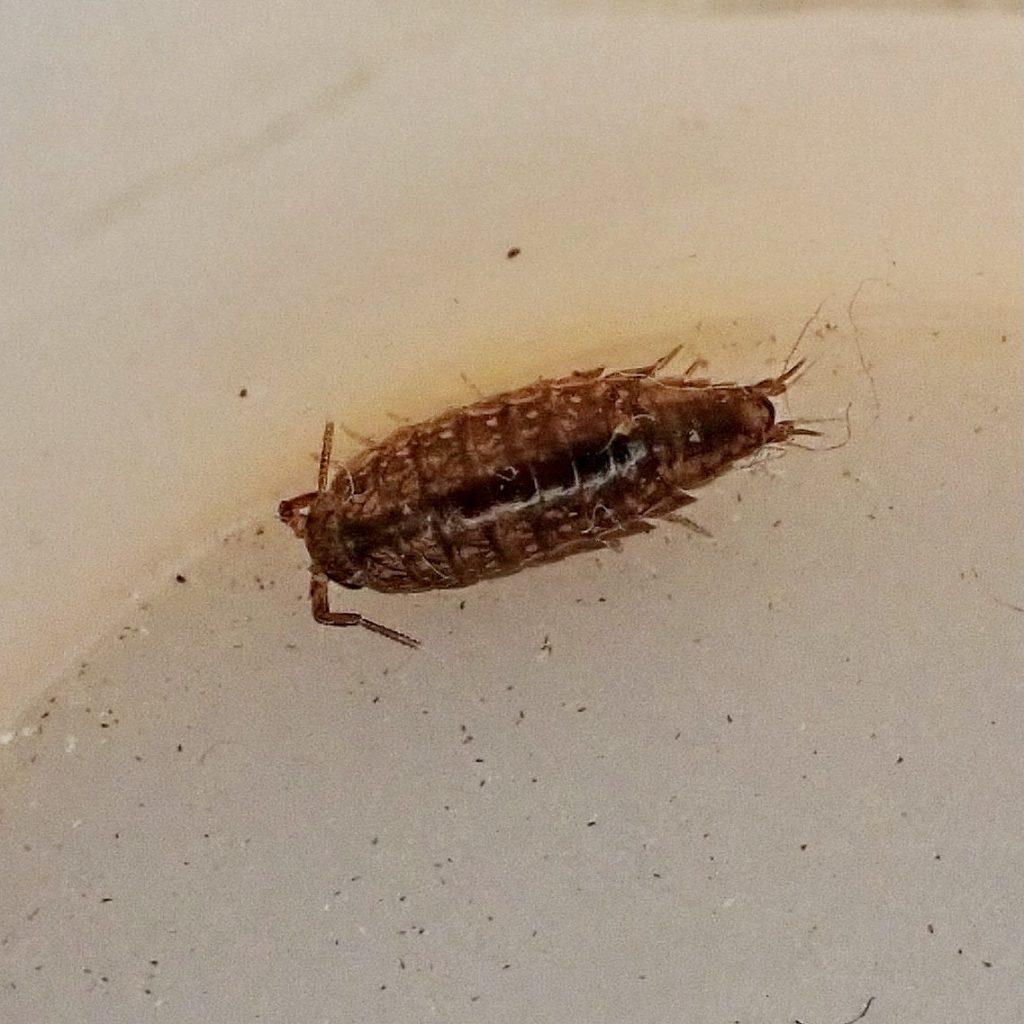
https://bugguide.net/node/view/1094979
https://crawford.tardigrade.net/bugs/BugofMonth17.html
https://zookeys.pensoft.net/article/24146/
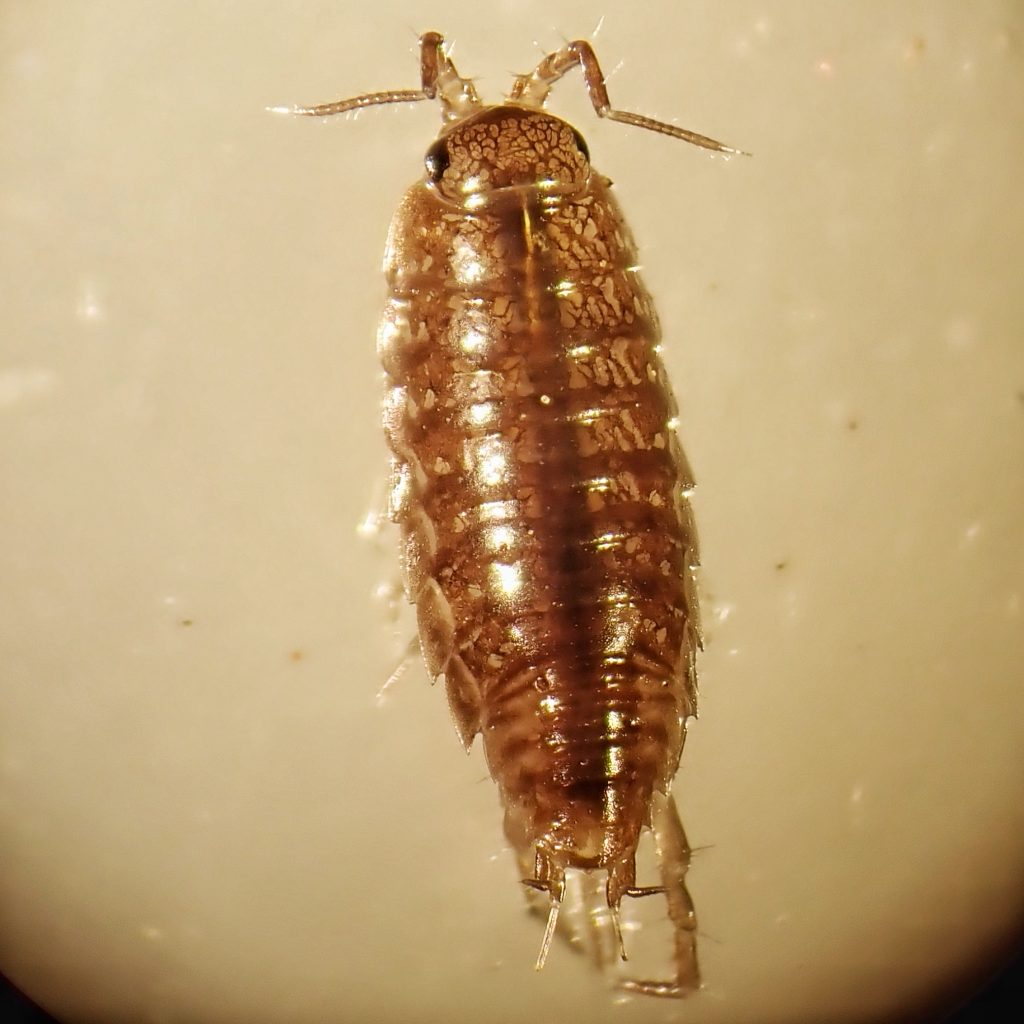
Enjoyed reading this. Especially about how it carries newly hatched young. I remember seeing this as a child gently playing with the little bugs and being amazed that they were carrying babies on their “tummies”. Do only the females carry the young?
Yes, only females. Did you happen to read the profile of Oniscus asellus? There is some really interesting stuff in there about Wolbachia infection and gender in woodlice, as well more about the marsupium. Thanks for your appreciation!